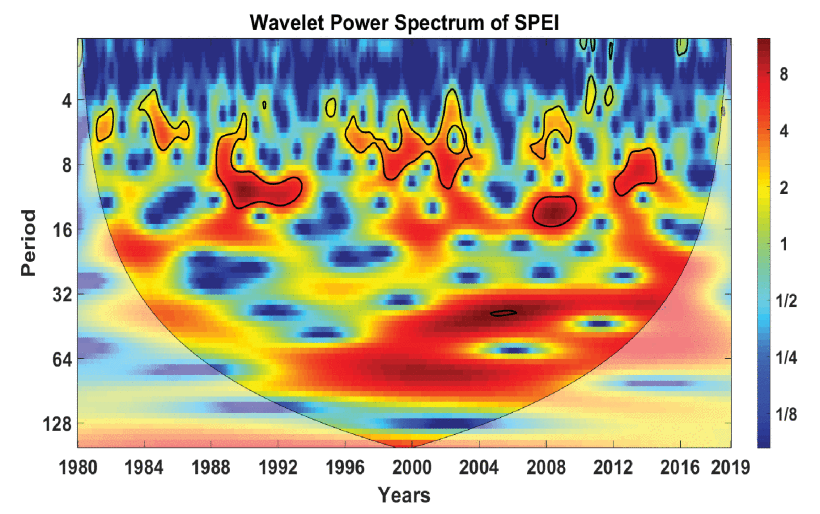IEEE Access, vol. 9, pp. 125032-125041, 2021
Evaluating Drought Events by Time-Frequency Analysis: A Case Study in Aegean Region of Turkey
Semra Kocaaslan, Nebiye Musaoğlu, Saeid Karamzadeh
Abstract: Drought is a slowly progressing and complex natural phenomenon, so the nature of drought events remains unclear. Remote sensing is preferred as an effective tool for finding, evaluating, and monitoring drought especially for large areas throughout long-term periods by providing near real-time and accurate data. Besides, Google Earth Engine (GEE) is a cloud-based service to provide analysis and visualization of geospatial datasets. The ability of GEE as a remote sensing platform to analyze high-impact societal issues, including water management diseases, disaster, deforestation, and climate monitoring environmental protection, offers it as the best option for drought monitoring. Here, Vegetation Health Index (VHI) index that combines Vegetation Condition Index (VCI) and Temperature Condition Index (TCI) has been chosen for agricultural drought assessment in a case study (Aegean Region of Turkey) from 2000 to 2018 (19 years). Thence, the land surface temperature (LST) data and the Normalized Difference Vegetation Index (NDVI) data from the Moderate Resolution Imaging Spectroradiometer (MODIS) sensor have been used and analyzed as remotely sensed data. The major data processing steps have been efficiently done on the GEE platform. Also, the time series and periodic behavior of these satellite-based indices have been examined. Besides, as the meteorological drought index, Standardized Precipitation Evapotranspiration Index (SPEI) time series were calculated for the region in question at different time scales (SPEI3, SPEI6, SPEI12, etc.) from 1980 to 2018 (39 years). Also, the frequency analysis of both satellite-based and meteorological station-based indices has been done. Fast Fourier Transform (FFT) for satellite-based indices frequency analyzing and Wavelet Transform (WT) for time-frequency analyzing of SPEI sequence have been used. Cross Wavelet (XWT), and Coherence Wavelet (CWT) were used to evaluate the time-frequency relationship of the satellite-based and the meteorological station-based time series.

Available Online: https://ieeexplore.ieee.org/abstract/document/9530512
 UHUZAM İTÜ – Uydu Haberleşme ve Uzaktan Algılama UYG-AR Merkezi
UHUZAM İTÜ – Uydu Haberleşme ve Uzaktan Algılama UYG-AR Merkezi 